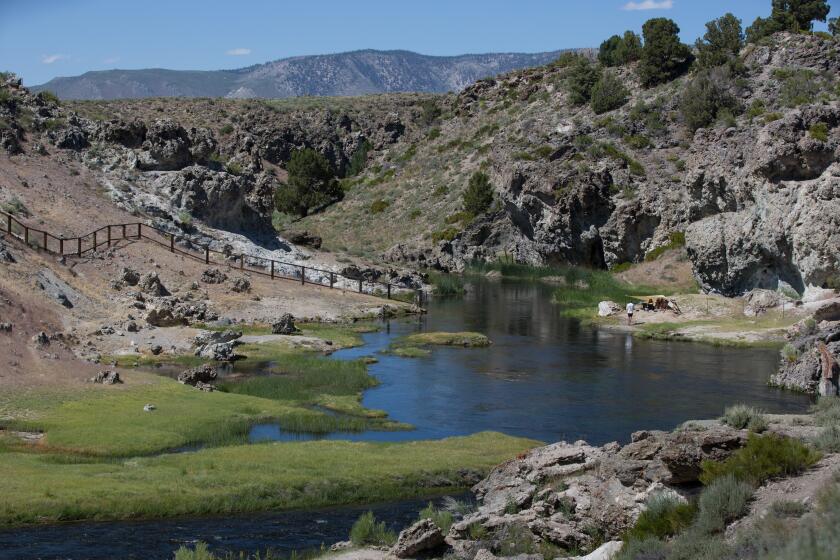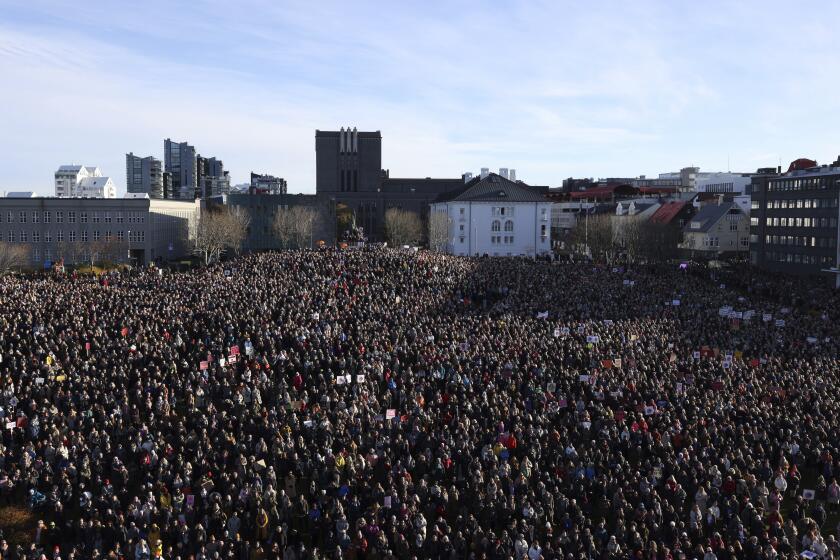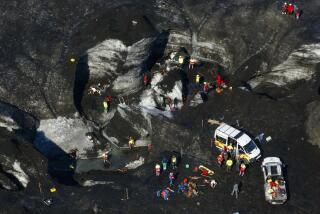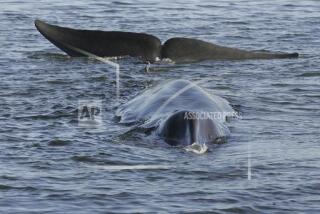Iceland faces challenges after lava from volcano cuts destructive path through town
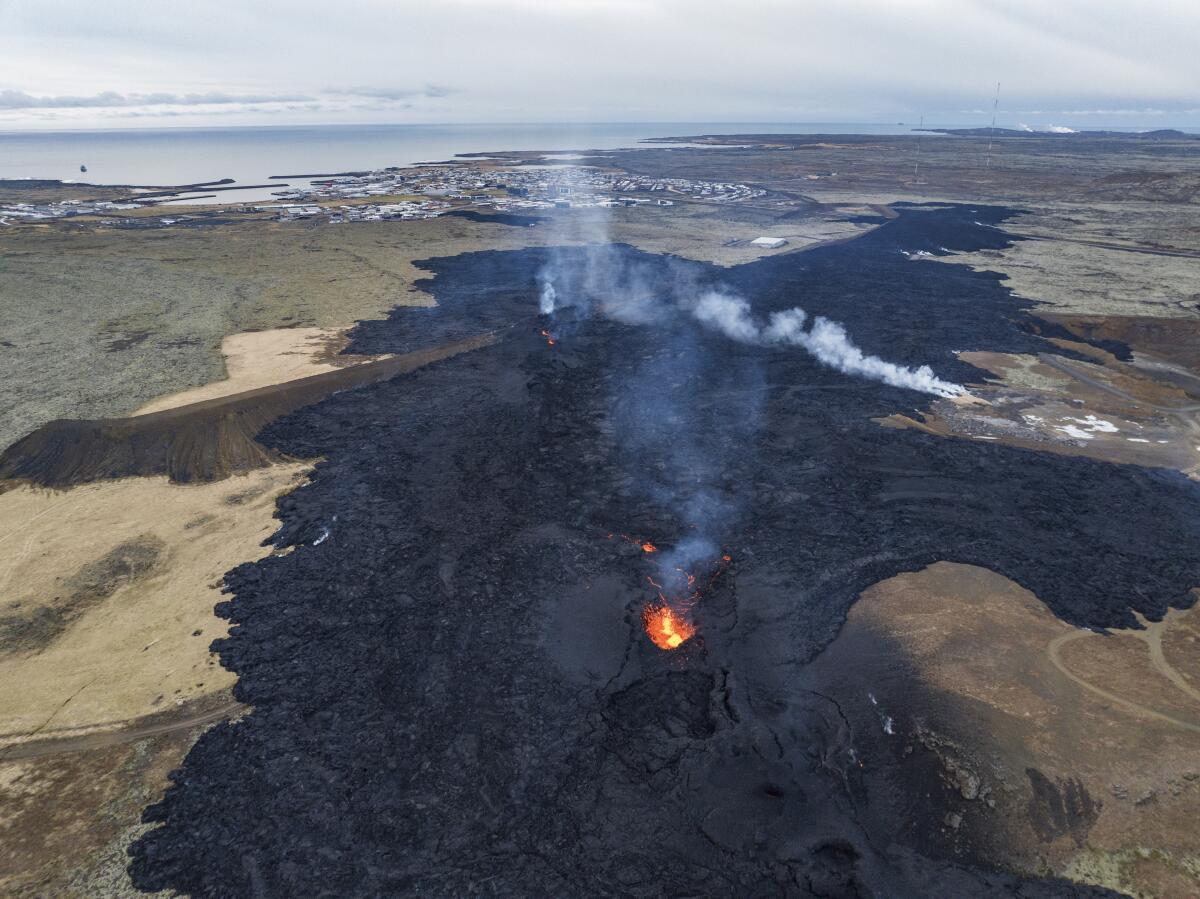
- Share via
REYKJAVIK, Iceland — Iceland’s president said the country is battling “tremendous forces of nature” after molten lava from a volcano in the island’s southwest consumed several houses in the evacuated town of Grindavik.
Scientists said Monday that the volcano’s eruption appeared to be dying down, but it was too soon to declare the danger over. Iceland’s Meteorological Office said that it was “difficult to estimate how long this eruption will last.”
President Gudni Th. Johannesson said in a televised address late Sunday that “a daunting period of upheaval has begun on the Reykjanes Peninsula,” where a long-dormant volcanic system has awakened.
A volcano on the peninsula erupted for the second time in less than a month Sunday, with orange lava bursting through two fissures near Grindavik, a fishing town. Authorities had ordered residents to leave hours earlier as a swarm of small earthquakes indicated an imminent eruption.
The nearby Blue Lagoon geothermal spa, one of Iceland’s biggest tourist attractions, also shut and said that it would remain closed until at least Tuesday.
Grindavik, which has a population of 3,800 and is about 30 miles southwest of the capital, Reykjavik, was previously evacuated in November when the Svartsengi volcanic system awakened after almost 800 years with a series of earthquakes that opened large cracks in the earth between the town and Sylingarfell, a small mountain to the north.
The Long Valley Caldera, which includes Mammoth Lakes area, has been having seismic activity, which can precede a volcanic eruption. Scientists say not to worry.
The volcano eventually erupted Dec. 18, sending lava flowing away from Grindavik. Residents were allowed to return to their homes four days later.
Since then, emergency workers have been building defensive walls that have stopped much of the lava flow from the new eruption short of the town.
The Icelandic Met Office said Monday that “lava flow has decreased from the eruptive fissures that opened yesterday. Flow from the southern eruptive fissure, which emerged around noon yesterday near the town‘s border, seems to have ceased. The majority of the remaining lava flow is now directed southwest along the protective barriers, and its trajectory seems to have stabilized.”
No one has been killed in the eruptions, but a workman is missing after reportedly falling into a crack opened by the volcano.
Women across Iceland, including Prime Minister Katrin Jakobsdóttir, went on strike Tuesday in a push to end unequal pay and gender-based violence.
“We don’t yet know how this eruption will unfold, but we must still take those actions that are within our power,” the president said. “We will carry on with our responsibilities and we will continue to stand together.
“We continue to hope for as good an outcome as possible, in the face of these tremendous forces of nature,” he added.
Iceland, which sits above a volcanic hot spot in the North Atlantic, averages one eruption every four to five years. The most disruptive in recent times was the 2010 eruption of the Eyjafjallajokull volcano, which spewed clouds of ash into the atmosphere and disrupted transatlantic air travel for months.
The latest eruption isn’t expected to release large amounts of ash into the air. Operations at Keflavík Airport in Reykjavik are continuing as normal, said Gudjon Helgason, spokesperson for airport operator Isavia.
More to Read
Sign up for Essential California
The most important California stories and recommendations in your inbox every morning.
You may occasionally receive promotional content from the Los Angeles Times.
